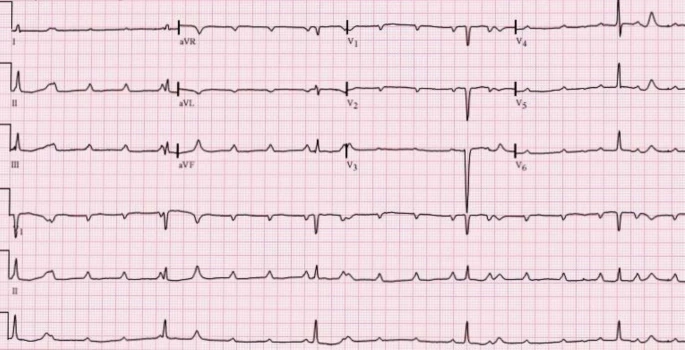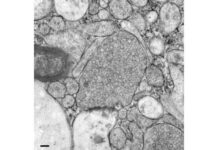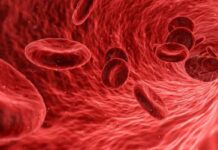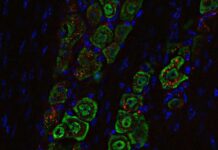Case Report
Kearns-Sayre syndrome (KSS) is a rare and severe mitochondrial disease (MD) distinguished by a combination of progressive external ophthalmoplegia (PEO), pigmentary retinal degeneration, and onset before the age of 20. There is also a high rate of cardiac involvement. This sets KSS apart from other MDs, where cardiac problems are less common. Furthermore, cardiac dysfunction has a major impact on prognosis in patients with KSS.
This case report depicts a young person with Kearns-Sayre syndrome (KSS) who presented with third-degree atrioventricular (AV) block. This study underscores the need of addressing KSS and other secondary causes in the differential diagnosis of young children with complete hearts.
KSS can have systemic issues in addition to the core triad. These can include deafness, cerebellar ataxia, and pigmentary retinopathy. Notably, pigmentary retinopathy is a defining feature of KSS, however its severity varies widely. The retinal degeneration in KSS can mimic retinitis pigmentosa, with alterations ranging from mild to severe pigment atrophy. KSS management prioritizes close monitoring for the emergence of ophthalmological problems.
Case Presentation
A 29-year-old right-handed Ethiopian male patient presented with a 10-year history of exercise intolerance, which worsened with mild-to-moderate activity. In addition, he had bilateral ptosis (drooping eyelids) since boyhood. He also had difficulties walking, with occasional loss of balance, particularly at night. In 2018, he had a permanent pacemaker implanted after being diagnosed with third-degree AV block using an electrocardiogram (ECG).
Pacemaker implantation led to a significant improvement in exercise tolerance. However, the patient then developed new neurological symptoms, such as dysarthria (slurred speech) and intermittent attention difficulties, especially during listening tasks. Furthermore, he noted a loss in hearing ability. The family history was negative for similar presentations.
Investigations
A physical examination revealed widespread muscular atrophy and bilateral symmetrical ptosis. Examining cranial nerves 3, 4, and 6 revealed ocular movement limitations in all quadrants. On cranial nerve 8 evaluations, he could not hear finger rubbing noises beyond 2 cm, but Rhine and Webber tests revealed no lateralization. Muscle size was similar in all four limbs, and power and tone were normal. However, dysmetria was detected during the finger-to-nose test. He was also unable to do the tandem gait. He was referred to the otolaryngology department for an audiometry assessment and was diagnosed with modest bilateral sensorineural hearing loss.
Laboratory tests were within normal reference limits, including a complete blood count (CBC), renal function tests (RFTs), serum electrolytes, and metabolic panels.
Treatment
The patient received permanent pacemaker placement, which significantly improved his exertional dyspnea. A multidisciplinary team is presently following him, including the cardiology, neurology, and ophthalmology departments.
Discussion
Kearns-Sayre syndrome (KSS), a rare mitochondrial disease (MD), is predominantly caused by mtDNA rearrangements. The most prevalent pathogenic mtDNA mutation is a 4.9 kb deletion that spans nucleotide locations 8470-13,446. This deletion removes several critical functioning genes, including MT-ATP8, MT-ATP6, MT-CO3, MT-ND3, MT-ND4L, MT-ND4, and MT-ND5. Mitochondrial DNA (mtDNA) deletions in KSS are primarily de novo mutations that occur spontaneously in the oocyte or during early embryo development. As a result, most KSS instances are sporadic, with only approximately 4% showing maternal inheritance of the mtDNA mutation.
The clinical diagnosis of KSS is based on three fundamental features: onset before the age of 20 years, progressive external ophthalmoplegia (PEO), and pigmentary retinopathy. Furthermore, the presence of at least one of the following supporting factors reinforces the diagnosis: cardiac conduction abnormalities, cerebellar ataxia, or increased cerebrospinal fluid (CSF) protein levels greater than 100 mg/dL.
ECG abnormalities in KSS are primarily defined by mixed intraventricular and atrioventricular (AV) conduction delays. This patient originally came with shortness of breath, and his ECG revealed a third-degree AV block. Cardiomyopathy, either hypertrophic or dilated, is a common clinical symptom in KSS patients. Heart failure is the leading cause of death in this patient population.




